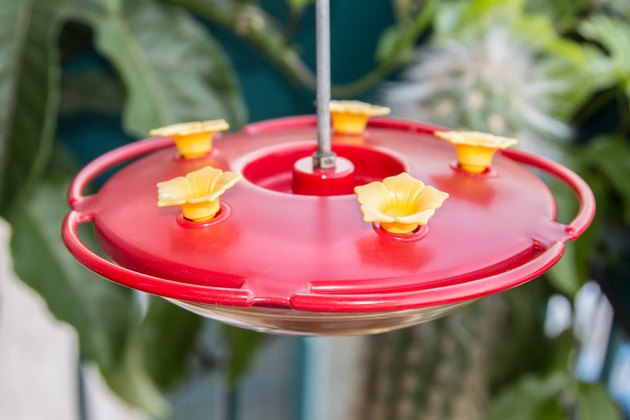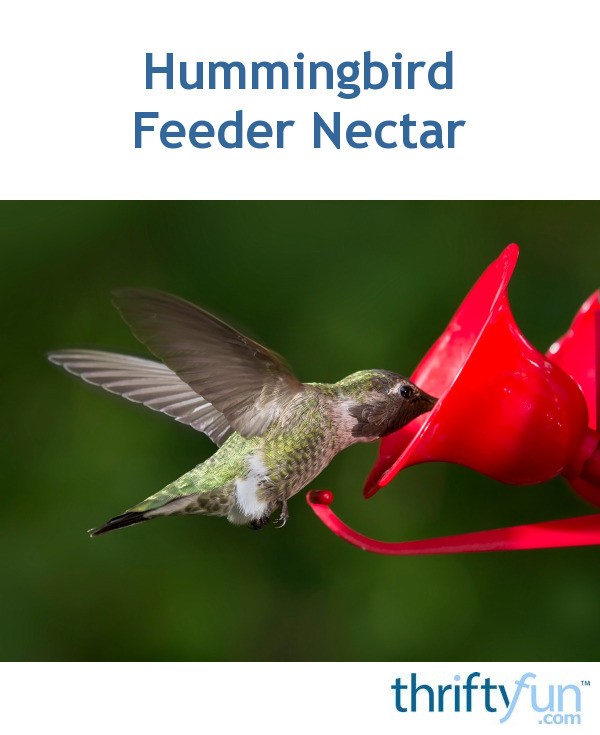

My feeders are near windows, where I can watch and enjoy them: one is in a living room window, another outside the kitchen, and a third hangs a foot or so from my office window. Where to hang your feeder? A new one may be found sooner if hung over or near a garden of hummingbird plants. After all, many hummingbirds spend around 80% of their time perching anyway, on twigs and leaf stems.


Give them a break, and provide a place for them to rest.

Consider that when hummingbirds feed from natural flowers, they spend very little time at any one blossom on the other hand, they may drink from one feeder port until they are satiated, and hovering is considerably more tiring to them than normal flight. But hummers live at the edges of their energy envelopes, and perching saves a lot of calories. Should you buy a feeder with perches? Many photographers prefer not to use perches, because they can get better pictures of hovering birds. Hummingbirds will come to any feeder that holds fresh syrup, so you might as well buy one that's easy for you to keep up - if it's easy, you're more likely to do it faithfully, and that's important. I recommend the HummZinger and similar well-designed basin feeders for their ruggedness as well as their ease of maintenance. In this respect, the basin-style feeders are much, much better than the inverted-bottle types. If you change feeders, they may not feed immediately from the new one, but they will adapt it may help to hang the old feeder, empty, next to the new one.Īny feeder can attract hummers, so perhaps the most important design feature to look for is ease of disassembly and cleaning. If your birds seem to prefer one style feeder over another, it's probably a simple matter of familiarity. Since feeders are much too recent a development for hummingbirds to recognize instinctively as food sources, they must learn to use them, which they do from watching other hummers and though their own natural inquisitiveness. Most feeders are made of plastic, glass, and/or ceramics. There are many imaginatively-styled hummingbird feeders available today, and they're sold in stores ranging from birding shops and garden centers to discount marts, as well as by mail order. Interest was aroused, and in 1950 the Webster feeder was offered for sale by the Audubon Novelty Company of Medina, NY. In 1947, National Geographic ran an article by Harold Edgerton about his newly-invented strobe flash, which included photos of hummingbirds at Webster's feeder. Sometime between 19, Webster had his design produced by an MIT lab glassblower (possibly James Ryan). Webster of Boston for his wife, who had read a 1928 National Geographic story about feeding hummers from small glass bottles. The device pictured at left is an example of the first commercially-available hummingbird feeder. :-) Meanwhile, let's talk about nectar feeders, some of which are reviewed on another page. If you have developed a particularly entertaining method of providing bugs for their dining pleasure, I'd be more than happy to publish it here. You might try setting out some overripe fruit-banana peels are good-to attract flies for your hummers. For protein and other nutrients, they also eat soft-bodied insects and spiders I like Bob Sargent's perspective: "Hummers need nectar to power the bug eating machine that they are." Think of them as miniature flycatchers, and sugar is just the fuel for getting their real nourishment. Hummingbirds get the energy they need to maintain their astonishing metabolism primarily from flower nectar and the sugar water they find at feeders (here's the recipe).


 0 kommentar(er)
0 kommentar(er)
